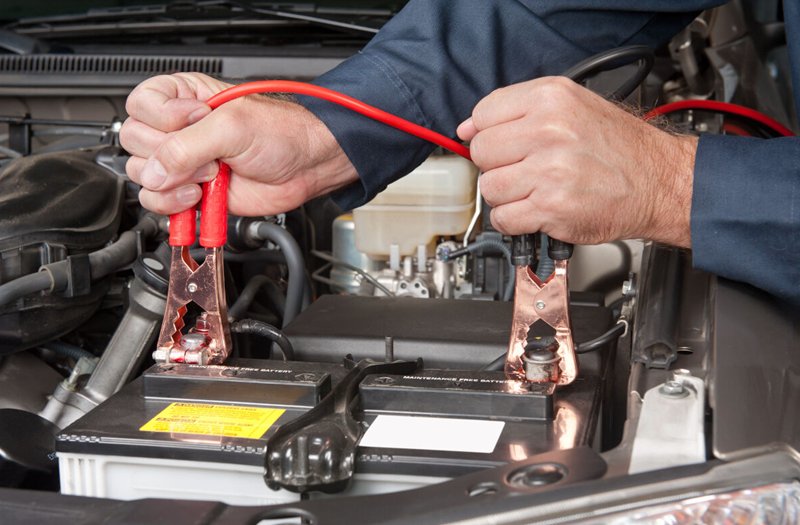Lifespan of a LiFePO4 Battery
LiFePO4 batteries have become increasingly popular in recent years due to their long lifespan and high performance. They are widely used in various applications, including electric vehicles, renewable energy systems, and portable electronics. However, how long can a LiFePO4 battery last? In this article, we will explore the lifespan of a LiFePO4 battery and factors that affect its longevity.
Firstly, it is important to understand what determines the lifespan of a battery. The lifespan of a LiFePO4 battery is primarily determined by the number of charge and discharge cycles it undergoes. Each cycle involves charging the battery to its full capacity and then discharging it until it reaches a certain level of depletion. The more cycles a battery undergoes, the more its capacity and performance degrade, eventually leading to the end of its useful life.
LiFePO4 batteries are known for their high cycle life, which is one of their key advantages over other types of rechargeable batteries. The average lifespan of a LiFePO4 battery is between 2000 and 5000 cycles, depending on the specific manufacturer and model. This means that if a battery undergoes one cycle per day, it can last for up to 5-10 years.
However, the actual lifespan of a LiFePO4 battery can vary widely depending on a variety of factors. One of the most important factors is the depth of discharge (DOD) during each cycle. The deeper the battery is discharged, the more stress is placed on its cells, which can lead to a shorter lifespan. It is generally recommended to keep the DOD of a LiFePO4 battery between 20% and 80% to maximize its lifespan.
Another factor that can affect the lifespan of a LiFePO4 battery is the charging rate. Charging a battery too quickly can cause overheating and damage to its cells, reducing its lifespan. It is important to follow the manufacturer’s recommendations for charging rates and avoid fast charging whenever possible.

Temperature is also an important factor that affects the lifespan of a LiFePO4 battery. High temperatures can cause the battery to degrade quickly, while low temperatures can reduce its performance. It is recommended to store and use LiFePO4 batteries at temperatures between 0°C and 40°C to ensure optimal performance and longevity.
In addition to these factors, the quality and design of the battery also play a role in determining its lifespan. Batteries from reputable manufacturers with high-quality cells and advanced safety features are more likely to have a longer lifespan than cheaper, lower-quality alternatives.
In conclusion, the lifespan of a LiFePO4 battery depends on a variety of factors, including the number of charge and discharge cycles, the depth of discharge, charging rate, temperature, and battery quality. By following the manufacturer’s recommendations and taking proper care of the battery, it is possible to maximize its lifespan and ensure optimal performance for years to come.
-
 Introduction: In recent years, there has been a rapid advancement in the field of robotics, particularly in the development of smart mobile robots. These robots are becoming increasingly prevalent in various industries, from manufacturing and logistics to healthcare and agriculture. One of the key factors that contribute to the efficiency and performance of these robots is the power source they...Læs mere
Introduction: In recent years, there has been a rapid advancement in the field of robotics, particularly in the development of smart mobile robots. These robots are becoming increasingly prevalent in various industries, from manufacturing and logistics to healthcare and agriculture. One of the key factors that contribute to the efficiency and performance of these robots is the power source they...Læs mere -
 In today's technologically advanced world, the demand for reliable and efficient power solutions is higher than ever before. Whether it's powering electric vehicles, storing renewable energy, or running industrial machinery, the need for high-performance batteries is crucial. One such solution that has gained significant popularity is the high capacity 12V 100Ah LiFePO4 battery. LiFePO4, which stands for lithium iron...Læs mere
In today's technologically advanced world, the demand for reliable and efficient power solutions is higher than ever before. Whether it's powering electric vehicles, storing renewable energy, or running industrial machinery, the need for high-performance batteries is crucial. One such solution that has gained significant popularity is the high capacity 12V 100Ah LiFePO4 battery. LiFePO4, which stands for lithium iron...Læs mere -
 As technology continues to advance, the choices for motorcycle batteries are becoming more varied and sophisticated. One of the latest and greatest options for powering your bike is the LiFePO4 motorcycle battery. This type of battery offers a number of benefits over traditional lead-acid batteries, making it a popular choice for riders who demand the best performance possible. Here are...Læs mere
As technology continues to advance, the choices for motorcycle batteries are becoming more varied and sophisticated. One of the latest and greatest options for powering your bike is the LiFePO4 motorcycle battery. This type of battery offers a number of benefits over traditional lead-acid batteries, making it a popular choice for riders who demand the best performance possible. Here are...Læs mere -
 With the increasing demand for efficient and reliable power storage systems, the development of lithium-ion batteries has become an important focus for many industrial and household applications. Among the different types of lithium-ion batteries available, the 12V 100Ah lithium battery with lithium iron phosphate (LiFePO4) technology has emerged as a top choice due to its high energy density, long lifespan,...Læs mere
With the increasing demand for efficient and reliable power storage systems, the development of lithium-ion batteries has become an important focus for many industrial and household applications. Among the different types of lithium-ion batteries available, the 12V 100Ah lithium battery with lithium iron phosphate (LiFePO4) technology has emerged as a top choice due to its high energy density, long lifespan,...Læs mere -
 In today's world, there is an increasing demand for portable power solutions. Whether it’s for outdoor activities, emergency situations, or just everyday use, having a reliable and efficient power source is essential. One such solution that has gained popularity in recent years is the 12V 100Ah LiFePO4 lithium battery. What is a LiFePO4 Lithium Battery? A LiFePO4 lithium...Læs mere
In today's world, there is an increasing demand for portable power solutions. Whether it’s for outdoor activities, emergency situations, or just everyday use, having a reliable and efficient power source is essential. One such solution that has gained popularity in recent years is the 12V 100Ah LiFePO4 lithium battery. What is a LiFePO4 Lithium Battery? A LiFePO4 lithium...Læs mere -
 In recent years, electric scooters have gained popularity as a sustainable mode of transportation. With concerns over pollution and the need to reduce carbon emissions, these eco-friendly vehicles have become a preferred choice for commuting in urban areas. At the heart of an electric scooter lies its battery, which plays a crucial role in powering this sustainable transportation option. ...Læs mere
In recent years, electric scooters have gained popularity as a sustainable mode of transportation. With concerns over pollution and the need to reduce carbon emissions, these eco-friendly vehicles have become a preferred choice for commuting in urban areas. At the heart of an electric scooter lies its battery, which plays a crucial role in powering this sustainable transportation option. ...Læs mere -
 Off-roading has always been an exhilarating and adventurous activity for outdoor enthusiasts. Whether it is conquering rough terrains, crossing muddy trails, or navigating through challenging landscapes, the thrill of off-roading is unmatched. However, the traditional off-roading vehicles often come with a significant drawback - the limited range and power supply. This limitation is now being overcome with the revolutionary UTV...Læs mere
Off-roading has always been an exhilarating and adventurous activity for outdoor enthusiasts. Whether it is conquering rough terrains, crossing muddy trails, or navigating through challenging landscapes, the thrill of off-roading is unmatched. However, the traditional off-roading vehicles often come with a significant drawback - the limited range and power supply. This limitation is now being overcome with the revolutionary UTV...Læs mere

